The Role of Solar Power in Emergency Preparedness
In today's unpredictable world, where natural disasters and emergencies seem to lurk around every corner, having a reliable source of energy is more crucial than ever. Solar power stands out as a beacon of hope in these challenging times, offering not just a sustainable energy solution but also a lifeline during crises. Imagine a scenario where the power goes out due to a storm or earthquake; suddenly, your ability to communicate, cook, or even stay warm is compromised. This is where solar energy shines, providing a dependable alternative that can keep essential services running when traditional power grids fail.
Solar power is not just about harnessing sunlight; it’s about empowering communities to be self-sufficient and resilient in the face of adversity. With solar panels installed, homes and businesses can generate their own electricity, ensuring that even in the darkest times, there is light. But how exactly does solar power enhance emergency preparedness? Let's delve into the intricacies of solar technology and its myriad benefits.
At its core, solar power technology is simple yet effective. It utilizes photovoltaic (PV) cells to convert sunlight into electricity. This process involves several key components, including solar panels, inverters, and batteries. The beauty of solar energy lies in its reliability and sustainability. Unlike fossil fuels, which can be scarce and environmentally damaging, solar energy is abundant and renewable. This makes it an ideal choice for emergency situations where quick access to power is essential.
Moreover, solar power systems can be designed to be modular, allowing for easy expansion as energy needs grow. This adaptability is particularly beneficial during emergencies when energy demands can surge unexpectedly. For example, in the aftermath of a natural disaster, communities can deploy portable solar generators to provide immediate relief, helping to power shelters, medical facilities, and communication systems.
In conclusion, as we face an ever-changing climate and the increasing likelihood of emergencies, solar power emerges as a vital component of effective emergency preparedness. By investing in solar technology, we not only reduce our dependence on traditional power sources but also pave the way for a more resilient future. So, are you ready to embrace solar power as a key player in your emergency preparedness strategy?
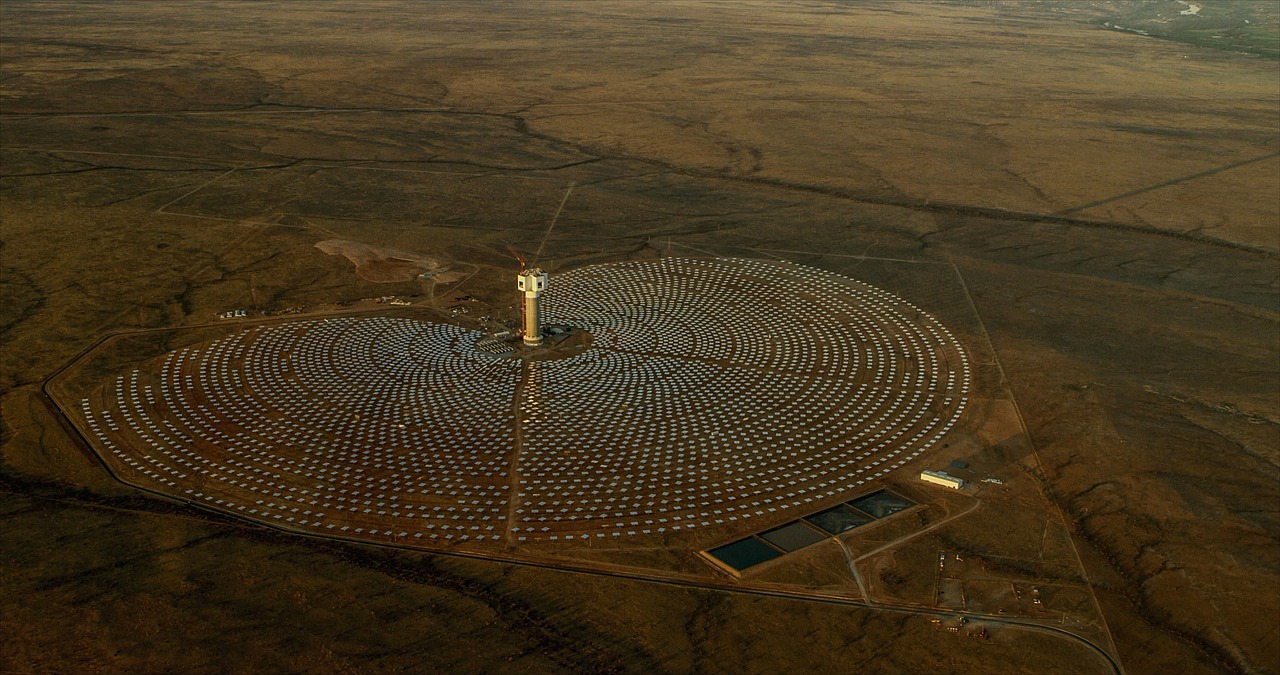
Understanding Solar Power Basics
When we talk about solar power, we're diving into a realm of technology that harnesses the sun's energy to generate electricity. But how does it actually work? In simple terms, solar power systems convert sunlight into usable energy through a process called photovoltaics. This involves solar panels made up of many individual solar cells, which are typically made from silicon. When sunlight hits these cells, it excites electrons, creating an electric current that can be captured and used to power homes, businesses, and even emergency response operations.
One of the most compelling aspects of solar power is its sustainability. Unlike fossil fuels, which can deplete and harm the environment, solar energy is abundant and renewable. Think of the sun as a giant battery in the sky, providing us with a limitless source of energy every day. This becomes especially important during emergencies when traditional power sources may fail, leaving communities in the dark. With solar power, you can maintain a reliable energy supply, making it a crucial component of any emergency preparedness plan.
Now, let’s break down the main components of a solar power system:
| Component | Function |
|---|---|
| Solar Panels | Convert sunlight into electricity. |
| Inverter | Transforms direct current (DC) from solar panels into alternating current (AC) for home use. |
| Battery Storage | Stores excess energy for use during cloudy days or nighttime. |
| Charge Controller | Regulates the voltage and current coming from the solar panels to the batteries. |
Each of these components plays a vital role in ensuring that solar power systems function efficiently, especially when the grid is down. Imagine being able to power your refrigerator, lights, or even medical equipment during a blackout. That’s the kind of peace of mind solar energy can provide in emergency situations.
Moreover, the advantages of solar power extend beyond just functionality. It offers environmental benefits as well. By reducing reliance on fossil fuels, solar energy helps decrease greenhouse gas emissions, contributing to a cleaner planet. This is particularly important in the wake of natural disasters, where the environment can be severely impacted. The less we rely on harmful energy sources, the better we can protect our ecosystems and communities.
In summary, understanding the basics of solar power is essential for anyone looking to enhance their emergency preparedness strategy. With its reliable technology, sustainability, and numerous benefits, solar power stands out as a beacon of hope during crises. It’s not just about having electricity; it’s about having a dependable, eco-friendly energy source that can make a significant difference when it matters most.

Benefits of Solar Power in Emergencies
When disaster strikes, having a reliable energy source can be a game changer. Solar power shines brightly as a beacon of hope during emergencies, offering numerous benefits that can significantly enhance preparedness and response efforts. One of the most compelling advantages of solar energy is its ability to provide a stable energy source. Unlike traditional power grids that can fail during crises, solar panels harness the sun’s energy, allowing communities and individuals to generate their own electricity even when the grid goes down. Imagine being able to power essential devices like lights, refrigerators, or medical equipment when the world outside is in chaos. This level of independence can be lifesaving.
Another vital benefit of solar power in emergencies is the potential for cost savings. While the initial investment in solar technology can seem daunting, the long-term financial advantages are hard to ignore. By reducing reliance on fuel sources, which can become scarce and expensive during crises, solar energy can help mitigate costs. For example, consider a household that typically spends $150 a month on electricity. In the aftermath of a disaster, fuel prices may skyrocket, leading to even higher bills. However, with solar panels installed, that household can significantly reduce or even eliminate their electricity costs, allowing funds to be redirected toward other critical needs.
Moreover, solar power has a minimal environmental impact, which is crucial during disaster recovery efforts. Traditional energy sources often contribute to pollution and greenhouse gas emissions, exacerbating the effects of climate change. In contrast, solar energy is clean and renewable, making it an ideal choice for communities seeking sustainable recovery solutions. By investing in solar power, communities can not only prepare for emergencies but also work towards a greener future.
To illustrate these benefits, let’s consider a few key points:
- Energy Independence: Solar power allows individuals and communities to generate their own electricity, reducing reliance on external sources.
- Cost-Effectiveness: Long-term savings on energy bills can free up resources for other critical needs during emergencies.
- Environmental Benefits: Utilizing solar energy contributes to a cleaner environment, which is vital during recovery efforts.
In addition to these advantages, solar technology is continuously evolving. Innovative solutions such as portable solar panels and solar batteries are emerging, enabling quicker and more flexible responses in emergency situations. These technologies can be easily transported and set up in various locations, ensuring that energy is available wherever it is needed most. Imagine a rescue team arriving at a disaster site equipped with portable solar panels, instantly providing power for communication devices, medical equipment, and basic necessities. This adaptability can significantly enhance the effectiveness of emergency response efforts.
In conclusion, the integration of solar power into emergency preparedness plans offers a multitude of benefits that extend beyond just providing energy. It fosters resilience, reduces costs, and promotes sustainability, making it an invaluable asset in times of crisis. As communities continue to face the challenges posed by natural disasters and emergencies, embracing solar energy can pave the way for a more prepared and self-sufficient future.
Q1: How does solar power work during an emergency?
A1: Solar power systems convert sunlight into electricity, allowing users to generate their own energy even when traditional power sources are unavailable. This can be crucial for powering essential devices during emergencies.
Q2: Are there any financial incentives for installing solar power systems?
A2: Yes, many governments offer tax credits, rebates, and other incentives to encourage the adoption of solar energy, which can help offset the initial installation costs.
Q3: Can solar power systems be used in remote areas?
A3: Absolutely! Solar power is particularly beneficial in remote or off-grid locations where access to traditional power sources may be limited.
Q4: What types of solar technologies are available for emergencies?
A4: There are various solar technologies, including stationary solar panels, portable solar kits, and solar batteries, which can be used to provide energy during emergencies.
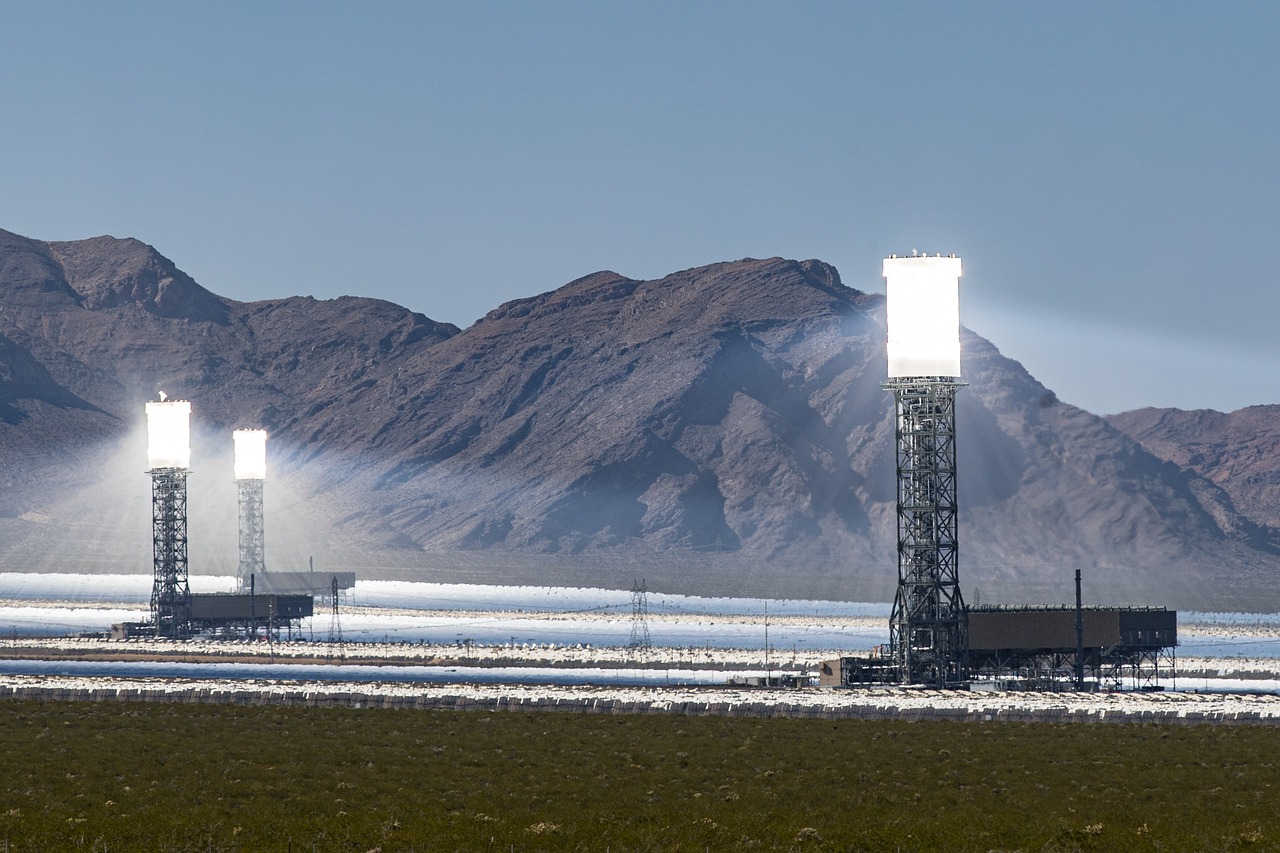
Cost-Effectiveness of Solar Solutions
When it comes to emergency preparedness, the cannot be overstated. Imagine a scenario where a natural disaster strikes, and the power grid is compromised. In such situations, having a solar energy system in place can mean the difference between comfort and chaos. But how does this translate into financial terms? Let's dive into the numbers.
Initially, the thought of investing in solar panels might seem daunting. The upfront costs can range significantly based on the system size and installation complexity. However, when you consider the long-term savings, the investment begins to look more appealing. For example, homeowners can save an average of $10,000 to $30,000 over 20 years on energy bills, depending on their location and energy usage. These savings can be particularly impactful during emergencies when traditional energy sources may become scarce or prohibitively expensive.
Moreover, solar power reduces reliance on volatile fuel prices. During emergencies, fuel can become not only scarce but also incredibly expensive due to increased demand. By harnessing solar energy, individuals and communities can shield themselves from these fluctuations. In fact, a study conducted by the National Renewable Energy Laboratory found that households with solar installations spent up to 50% less on energy during crisis situations compared to those without.
To illustrate the cost-effectiveness of solar solutions further, let’s take a look at a simple comparison:
| Cost Factor | Traditional Energy Source | Solar Energy Source |
|---|---|---|
| Initial Investment | Varies (high) | Varies (moderate) |
| Monthly Energy Bills | High (variable) | Low (near zero after payback) |
| Fuel Price Volatility | High | None |
| Maintenance Costs | Moderate | Low |
As you can see from the table above, while the initial investment for solar solutions may be moderate, the long-term benefits are substantial. Additionally, many solar installations require minimal maintenance, which further enhances their cost-effectiveness. This is crucial during emergencies when every penny counts.
Furthermore, various government incentives and rebates can significantly reduce the financial burden of installing solar systems. Programs such as the Investment Tax Credit (ITC) allow homeowners to deduct a percentage of their solar installation costs from their federal taxes. This can lead to immediate savings and make solar energy more accessible to a broader range of people.
In conclusion, the cost-effectiveness of solar solutions in emergency preparedness is compelling. By investing in solar energy, not only do you secure a reliable power source during crises, but you also pave the way for long-term savings and energy independence. As we continue to face unpredictable challenges, solar power stands out as a beacon of hope and resilience.
- What are the initial costs of installing solar panels? Initial costs can vary widely based on system size and installation, but many homeowners find it ranges from $15,000 to $25,000 before incentives.
- How much can I save on energy bills with solar? Homeowners can save between $10,000 and $30,000 over 20 years, depending on their energy usage and local electricity rates.
- Are there any government incentives for solar energy? Yes, there are several incentives, including the Investment Tax Credit (ITC), which allows you to deduct a percentage of your solar installation costs from your federal taxes.
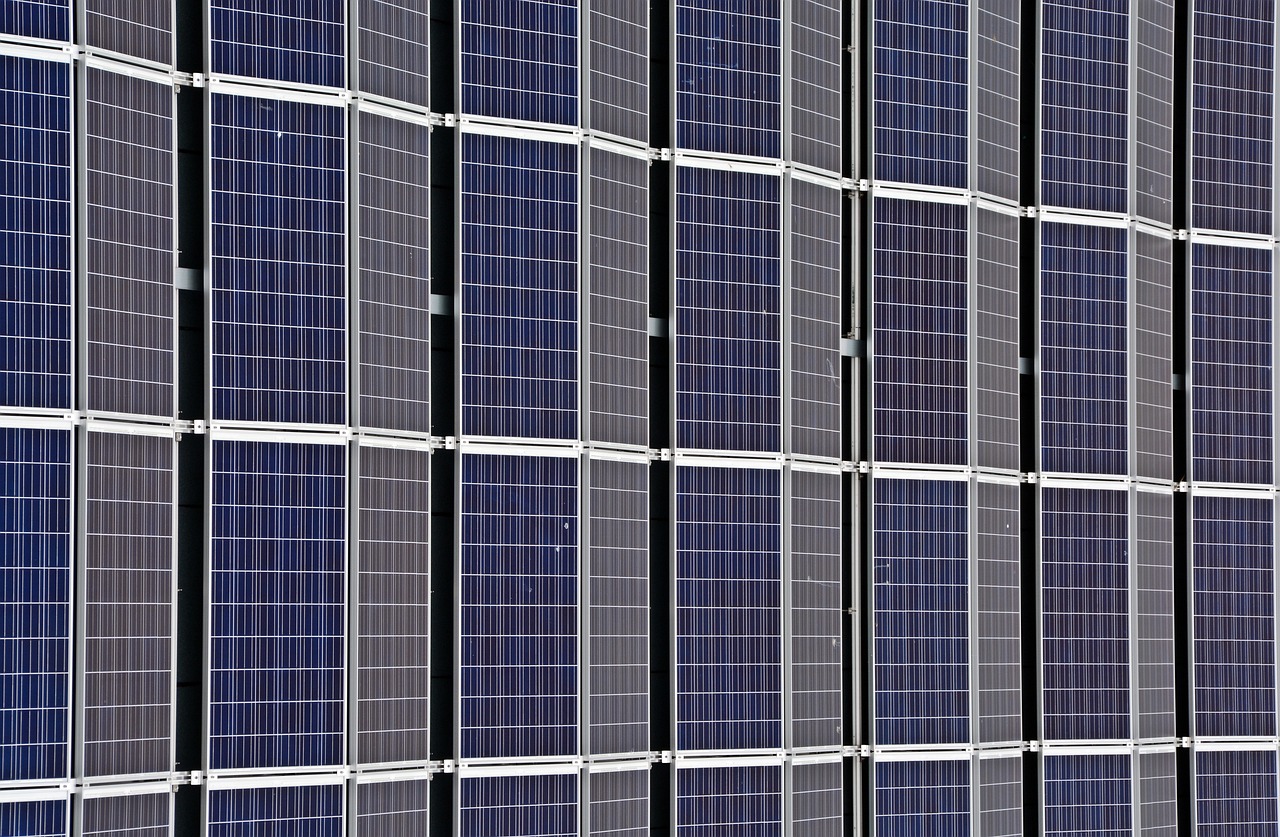
Initial Investment vs. Long-Term Savings
When considering solar power for emergency preparedness, one of the most significant factors to weigh is the initial investment against the potential for long-term savings. Yes, the upfront costs of solar panels and installation can seem daunting. However, it's essential to look beyond that initial price tag to understand the financial benefits that can unfold over time. Think of it as planting a seed; the initial effort may be considerable, but the harvest can be bountiful.
Let's break it down: the average cost of installing solar panels can range from $15,000 to $25,000, depending on the system's size and the installation specifics. While this might feel like a hefty sum, the long-term savings can be substantial. For instance, homeowners often see a reduction of 50% or more in their electricity bills once they switch to solar. This means that over a typical 20-25 year lifespan of solar panels, you could save tens of thousands of dollars on energy costs.
Moreover, during emergencies, having a solar energy system can drastically reduce your reliance on traditional power grids, which may be compromised during a disaster. This independence can translate into significant savings on fuel costs, especially if you're using backup generators that run on gasoline or diesel. Not to mention, the environmental benefits of using renewable energy can also lead to potential savings in terms of health and environmental cleanup costs.
To put this into perspective, let’s consider a simple comparison:
| Cost Factors | Initial Investment | Long-Term Savings |
|---|---|---|
| Solar Panel Installation | $15,000 - $25,000 | $30,000 - $50,000 over 20 years |
| Electricity Bill Reduction | N/A | 50% or more savings |
| Fuel Costs for Generators | Variable (depends on usage) | Potentially eliminated during emergencies |
In addition to the direct savings, many states and the federal government offer incentives and rebates for solar installations, which can significantly offset the initial costs. These programs can make solar energy not just an environmentally conscious choice, but also a financially savvy one. The combination of these incentives and the long-term savings can make the initial investment much more palatable.
Ultimately, while the initial investment in solar energy systems may be significant, the long-term savings, combined with the peace of mind that comes from having a reliable source of energy during emergencies, makes it a wise decision for many homeowners and communities. It's like buying insurance for your energy needs—you invest now to secure your future.
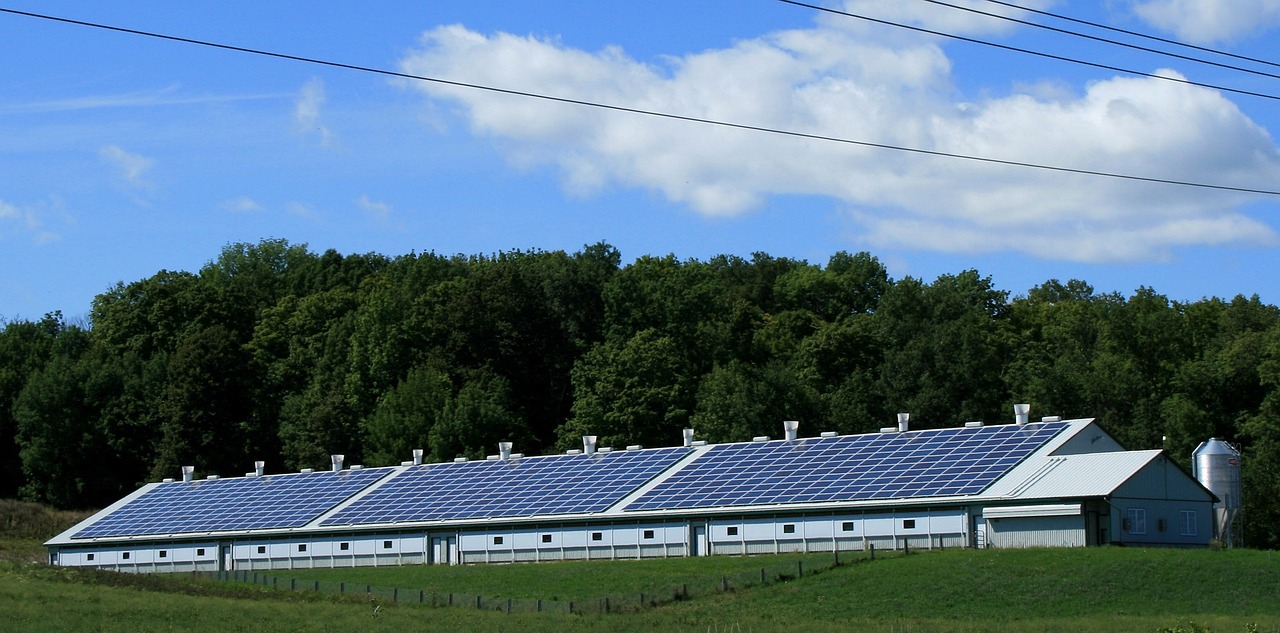
Government Incentives and Rebates
When considering the transition to solar power, one of the most appealing aspects is the array of available to homeowners and businesses. These programs are designed to encourage the adoption of renewable energy sources, making solar installations more financially feasible for many. Depending on where you live, you may find a variety of incentives that can significantly reduce the initial costs associated with solar power systems.
For instance, many states offer tax credits that allow you to deduct a percentage of your solar installation costs from your state taxes. The federal government also provides a substantial tax credit known as the Investment Tax Credit (ITC), which allows you to deduct a significant percentage of your solar expenses from your federal taxes. As of now, this credit is set to remain at 26% until the end of 2022, making it a prime opportunity for those considering solar energy.
In addition to tax credits, some local governments and utility companies offer rebates that further reduce the upfront costs. These rebates can vary widely, so it’s essential to research what’s available in your area. For example, a local utility might provide a rebate based on the amount of energy your solar system is expected to produce. This can lead to substantial savings, making solar power not just an environmentally friendly choice but also a financially smart one.
Furthermore, many states have implemented net metering policies, allowing solar energy users to sell excess energy back to the grid. This not only helps offset your energy costs but can also provide an additional income stream, further enhancing the appeal of solar investments. In some cases, these programs are coupled with low-interest loans or financing options specifically for solar installations, which can ease the burden of upfront costs.
To summarize, the combination of tax credits, rebates, net metering, and financing options creates a robust framework for making solar power more accessible and affordable. Below is a table summarizing some common incentives:
| Incentive Type | Description | Potential Savings |
|---|---|---|
| Federal Tax Credit (ITC) | Deduct a percentage of solar installation costs from federal taxes | 26% of installation cost |
| State Tax Credits | Deduct a percentage of solar installation costs from state taxes | Varies by state |
| Utility Rebates | Rebates based on expected energy production | Varies by utility |
| Net Metering | Sell excess energy back to the grid | Offset energy costs; potential income |
| Low-Interest Loans | Financing options for solar installations | Reduced upfront costs |
By taking advantage of these incentives, individuals and businesses can significantly reduce the financial barriers to adopting solar energy, paving the way for a more sustainable future. As the world moves towards renewable energy, these government programs serve as a crucial support system, ensuring that solar power can be an integral part of our emergency preparedness strategies.
Q: What is the Investment Tax Credit (ITC)?
A: The ITC allows homeowners to deduct a percentage of their solar installation costs from their federal taxes, making solar power more affordable.
Q: Are there state-specific incentives for solar energy?
A: Yes, many states offer additional tax credits, rebates, and incentives that vary by location, so it's essential to research local programs.
Q: How does net metering work?
A: Net metering allows you to sell excess energy produced by your solar system back to the grid, which can help offset your energy bills.
Q: Can I finance my solar installation?
A: Yes, many lenders offer low-interest loans specifically for solar installations, making it easier to manage upfront costs.

Integration with Emergency Plans
When it comes to emergency preparedness, integrating solar power into existing plans is not just a smart move; it’s a game changer. Imagine a scenario where a natural disaster strikes, and traditional power sources fail. In such situations, having a reliable energy source can make all the difference. By incorporating solar energy solutions into emergency plans, communities can ensure that they have access to power when it’s needed the most. But how exactly can this be achieved?
First, it’s essential to assess the specific energy needs of your community during a crisis. This can include powering essential services such as hospitals, shelters, and communication centers. Once these needs are identified, communities can explore different solar options, such as installing solar panels on public buildings or providing portable solar generators for emergency response teams. By doing so, they create a sustainable energy strategy that can be activated during emergencies.
Moreover, collaboration is key. Local governments, emergency management agencies, and solar energy providers should work together to develop a comprehensive plan that includes:
- Training personnel: Ensuring that emergency responders are trained on how to use solar equipment effectively.
- Public awareness: Educating the community about the benefits of solar power and how it can be utilized during emergencies.
- Maintenance and testing: Regularly checking solar installations to ensure they are functional and ready for deployment when needed.
Integrating solar power into emergency plans not only enhances resilience but also fosters a culture of sustainability. As communities become more aware of their energy consumption and the importance of renewable resources, they can better prepare for future challenges. This proactive approach can lead to the development of more robust emergency response frameworks that prioritize renewable energy sources.
In conclusion, the integration of solar power into emergency preparedness plans is a forward-thinking strategy that can significantly improve a community's ability to respond to crises. By leveraging the sun's energy, communities can reduce their reliance on traditional power grids, ensuring that when disaster strikes, they are not left in the dark.
Q: How can solar power help during a natural disaster?
A: Solar power can provide a reliable energy source when traditional power grids fail, allowing for essential services to remain operational.
Q: What types of solar technologies are best for emergencies?
A: Portable solar panels and solar batteries are excellent options as they can be easily deployed and provide immediate power.
Q: Are there government incentives for integrating solar power into emergency plans?
A: Yes, many governments offer tax credits and rebates for solar installations, which can help offset initial costs.
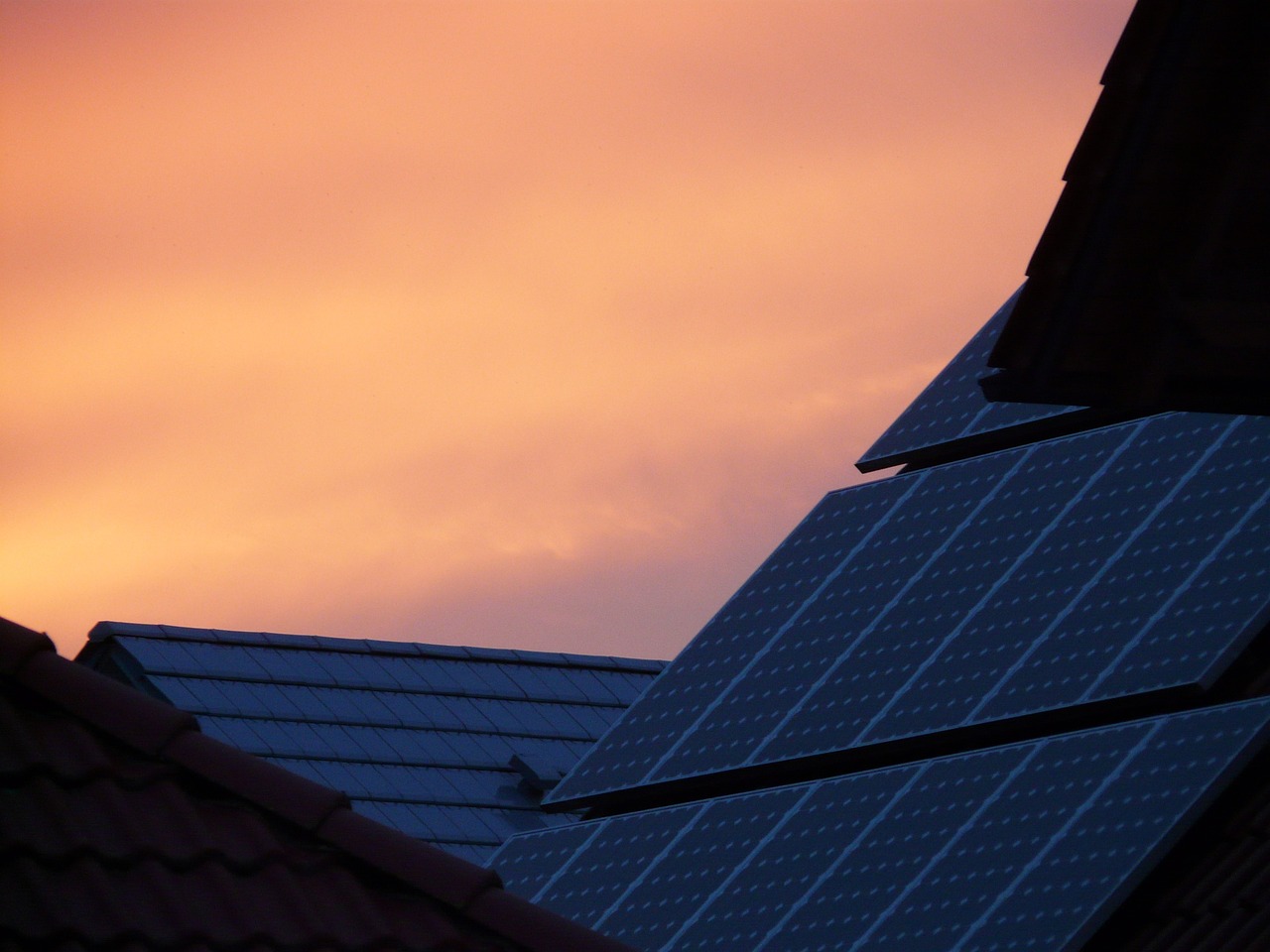
Case Studies of Solar Power in Action
When it comes to emergency preparedness, the real-world applications of solar power can be incredibly enlightening. Let’s dive into some fascinating case studies that illustrate how communities have effectively harnessed solar energy during crises. These examples not only showcase the reliability of solar technology but also highlight its potential to transform the way we respond to emergencies.
One remarkable instance occurred in Puerto Rico following Hurricane Maria in 2017. The storm devastated the island, leaving millions without power for months. However, communities that had invested in solar energy systems experienced a different reality. In the town of Guanica, local residents had installed solar panels and battery storage systems prior to the hurricane. As a result, they were able to maintain power for essential services, such as medical clinics and water purification facilities, while many neighboring areas remained in darkness. This case underscores the importance of solar energy as a lifeline in times of crisis.
Another compelling example comes from the California wildfires. During the devastating fires of 2020, many rural communities faced power outages due to safety protocols aimed at preventing further fires. In response, several families turned to portable solar generators. These devices not only provided immediate power for essential appliances but also allowed families to stay connected with emergency services. The use of solar technology during these wildfires demonstrated how even small-scale solar solutions can make a significant difference in emergency situations.
Moreover, the City of San Diego has implemented a comprehensive solar energy program that integrates solar power into its emergency response strategy. During the 2019 power shutoffs, the city utilized its solar microgrids to ensure critical infrastructure, such as hospitals and emergency shelters, remained operational. This proactive approach showcases how cities can effectively plan for emergencies by incorporating renewable energy solutions into their infrastructure.
To further illustrate the impact of solar power in emergencies, consider the following table that summarizes key case studies:
| Location | Event | Solar Solution | Outcome |
|---|---|---|---|
| Puerto Rico | Hurricane Maria | Solar panels with battery storage | Maintained power for essential services |
| California | Wildfires 2020 | Portable solar generators | Provided power for families and emergency services |
| San Diego | Power Shutoffs 2019 | Solar microgrids | Kept critical infrastructure operational |
These case studies not only highlight the effectiveness of solar power in emergencies but also serve as a call to action for communities to consider investing in renewable energy sources. The ability to generate power independently during crises can save lives and reduce the overall impact of disasters. As we look to the future, it’s clear that solar energy will play an increasingly vital role in our emergency preparedness strategies.
Q: How can solar power systems be integrated into existing emergency plans?
A: Solar power systems can be included in emergency plans by identifying critical facilities that require power and ensuring they are equipped with solar panels and battery storage. Training community members on how to operate these systems during emergencies is also essential.
Q: What types of solar technology are best for emergencies?
A: Portable solar panels and solar generators are excellent options for emergencies, as they are easy to deploy and can provide immediate power for essential needs.
Q: Are there government programs that support solar energy adoption for emergency preparedness?
A: Yes, many governments offer incentives such as tax credits and rebates to encourage the installation of solar energy systems, which can significantly reduce initial costs.
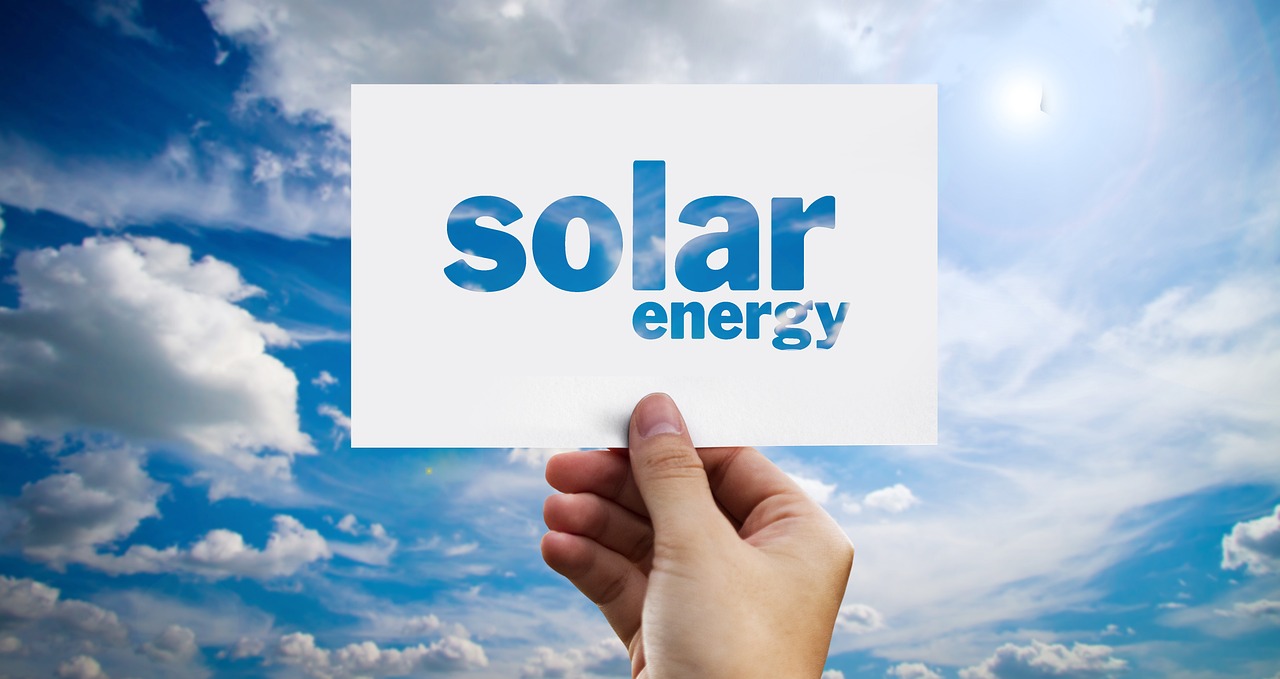
Lessons Learned from Past Disasters
When we look back at past disasters, it becomes evident that solar power has played a pivotal role in emergency response efforts. Take Hurricane Sandy, for instance. In 2012, many communities faced prolonged power outages, but those equipped with solar energy systems were able to maintain essential services. This highlighted not just the importance of having a decentralized energy source, but also the need for communities to integrate solar technology into their emergency preparedness plans.
One key lesson learned is the necessity of proactive planning. Many areas that suffered extensive damage lacked the foresight to incorporate renewable energy solutions into their emergency strategies. As a result, they found themselves at the mercy of traditional power grids, which can fail during crises. In contrast, communities that had invested in solar power were able to keep critical infrastructure operational, such as hospitals and emergency response centers. This demonstrates that foresight can significantly mitigate the impact of disasters.
Another critical takeaway is the importance of community education. Many residents were unaware of how to effectively use solar energy systems during emergencies. For example, in the aftermath of a disaster, those with solar panels often had the ability to power their homes, but without proper knowledge of battery storage and energy management, they could not optimize their resources. Training programs that educate community members on solar technology can empower individuals and improve resilience during crises.
Moreover, the integration of solar energy with other technologies has proven beneficial. For instance, pairing solar panels with battery storage systems allows for energy to be stored and used when the sun isn’t shining. This combination has been particularly useful in areas affected by disasters, where the grid is down for extended periods. The ability to harness and store solar energy can be the difference between having power or being left in the dark.
To summarize, the lessons learned from past disasters underscore the importance of solar power in enhancing emergency preparedness. By planning ahead, educating communities, and integrating solar technology with energy storage solutions, we can create a more resilient future. As we face the inevitable challenges of climate change and natural disasters, these insights will be invaluable in shaping our responses and ensuring that communities are better equipped to handle crises.
- How does solar power work during emergencies?
Solar power systems convert sunlight into electricity, providing a reliable energy source when traditional grids fail. - What are the costs associated with installing solar energy systems?
While the initial investment can be significant, many find that long-term savings on energy bills offset these costs. - Are there government incentives for solar power?
Yes, many governments offer tax credits and rebates to encourage solar energy adoption, making it more affordable for households and businesses. - Can solar power be used in remote areas during emergencies?
Absolutely! Portable solar panels can be deployed in remote locations to provide immediate energy access when traditional sources are unavailable.
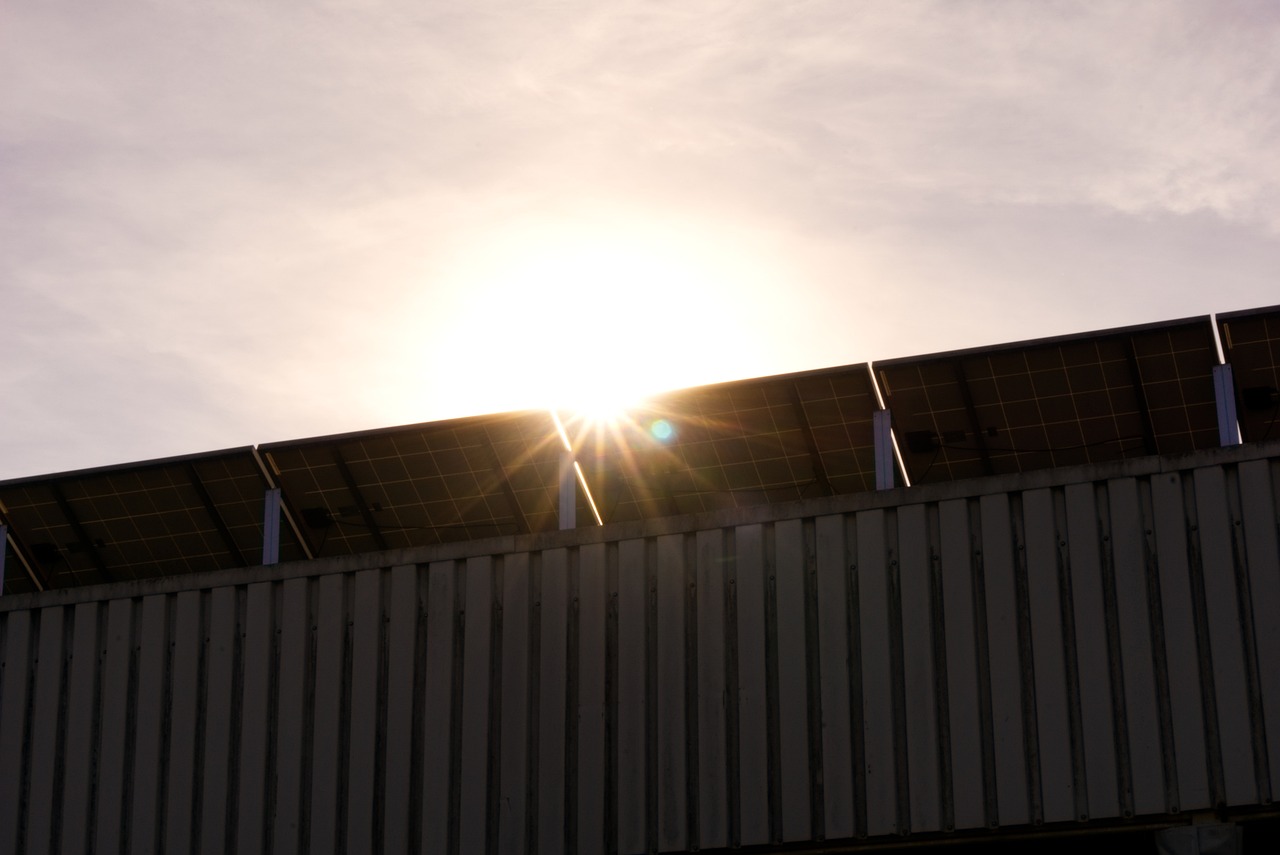
Innovative Solar Technologies
As we venture further into the 21st century, the landscape of solar power is evolving at an astonishing rate. Innovative solar technologies are not just enhancing the efficiency of energy capture; they are redefining how we think about energy access, especially in emergency situations. Imagine a world where power is always at your fingertips, regardless of the chaos around you. This is becoming a reality, thanks to advancements in solar technology.
One of the most exciting developments is the emergence of portable solar panels. These compact and lightweight solutions can be easily transported and set up in various locations, making them ideal for disaster relief efforts. Picture a community struck by a natural disaster; traditional power lines may be down, but with portable solar panels, emergency responders can quickly restore power to critical services. They are a game-changer, providing immediate energy access where it’s needed most.
Another innovative technology making waves in the solar industry is the advancement of solar batteries. These batteries store excess energy generated during sunny days, ensuring that power is available even when the sun isn’t shining. This capability is crucial during emergencies when the demand for energy surges. For instance, hospitals and shelters can rely on solar batteries to maintain operations during blackouts. The ability to store energy not only enhances reliability but also promotes sustainability by reducing reliance on fossil fuels.
Moreover, we are witnessing the rise of building-integrated photovoltaics (BIPV). This technology integrates solar panels directly into building materials, such as roofs and windows. Imagine a hospital or community center designed with solar energy generation in mind from the ground up. BIPV not only provides energy but also contributes to the aesthetic appeal of buildings, making them more functional and environmentally friendly. In emergency situations, these buildings can serve as energy hubs, offering shelter and power to those in need.
To illustrate the impact of these technologies, let’s take a look at a few key features in a comparative table:
| Technology | Benefits | Ideal Use Cases |
|---|---|---|
| Portable Solar Panels | Lightweight, easy to transport, quick setup | Disaster relief, outdoor events, camping |
| Solar Batteries | Energy storage, backup power, reduces grid dependency | Hospitals, shelters, residential use during outages |
| Building-Integrated Photovoltaics (BIPV) | Energy generation, aesthetic integration, multifunctional | New constructions, retrofitting existing buildings |
As we explore these innovative solutions, it’s essential to consider their implications for emergency preparedness. The integration of these technologies into our energy infrastructure can significantly enhance resilience. Communities equipped with portable solar panels and solar batteries are better prepared to respond to crises, ensuring that essential services remain operational. The future of solar technology is not just about generating power; it’s about creating a sustainable and reliable energy ecosystem that can withstand the test of time and adversity.
In summary, the advancements in solar technologies are paving the way for a brighter, more resilient future. By embracing these innovations, we can ensure that when the lights go out, we have the tools to bring them back on, no matter the circumstances. As we continue to innovate and adapt, the role of solar power in emergency preparedness will only grow, making it an indispensable part of our energy strategy.
- What are portable solar panels? Portable solar panels are lightweight, easily transportable solar energy systems that can be set up quickly in various locations, making them ideal for emergency situations.
- How do solar batteries work? Solar batteries store excess energy generated by solar panels during sunny periods, allowing users to access power even when solar generation is low.
- What is BIPV? Building-Integrated Photovoltaics (BIPV) refers to solar panels that are integrated into building materials, such as roofs and windows, providing both energy generation and aesthetic value.

Future Trends in Solar Energy for Emergencies
As we look ahead, the landscape of solar energy is evolving rapidly, and its role in emergency preparedness is no exception. The future of solar energy for emergencies is not just about providing power; it's about enhancing resilience and ensuring communities can withstand and recover from crises more effectively. With advancements in technology and a growing emphasis on sustainability, solar energy is poised to become a cornerstone of emergency response strategies.
One of the most exciting trends is the development of portable solar solutions. Imagine a scenario where first responders arrive at a disaster site with compact solar panels that can be set up in minutes. These systems can provide immediate power for essential services, such as communication, medical care, and temporary shelters. The ability to deploy solar energy rapidly can make a significant difference in the initial response phase, where every second counts.
Moreover, solar battery storage systems are becoming increasingly sophisticated. These batteries can store excess energy generated during sunny days, ensuring that power is available even when the sun isn't shining. This capability is crucial during emergencies when traditional power sources may be down. Communities equipped with solar batteries can maintain critical operations, such as hospitals and emergency shelters, providing a lifeline to those in need.
Another trend on the horizon is the integration of smart technology with solar energy systems. Smart grids and IoT devices can optimize energy usage, monitor system performance, and even predict energy needs based on historical data. This integration allows for a more efficient response during emergencies, as energy can be allocated dynamically based on real-time requirements. Imagine a community where solar energy systems communicate with each other to ensure that power is directed where it's needed most, minimizing waste and maximizing efficiency.
Furthermore, we are witnessing a push towards community solar projects, which allow multiple households to share the benefits of solar energy. These projects can be particularly beneficial in emergency situations, as they create a network of energy resources that can support entire neighborhoods. If one home is affected by a disaster, neighboring homes can still provide power, enhancing community resilience.
Finally, as climate change continues to pose challenges worldwide, the emphasis on sustainable practices will only grow. Solar energy is inherently sustainable, and its role in emergency preparedness aligns perfectly with the need for environmentally friendly solutions. By investing in solar energy, communities are not only preparing for emergencies but also contributing to a healthier planet.
In summary, the future of solar energy in emergencies is bright and full of potential. With portable solutions, advanced battery storage, smart technology integration, community projects, and a focus on sustainability, solar power will undoubtedly play a pivotal role in enhancing emergency preparedness. As we continue to innovate and adapt, the resilience of our communities will be strengthened, ensuring that we are better equipped to face whatever challenges lie ahead.
- How does solar energy help during emergencies? Solar energy provides a reliable power source when traditional grids fail, ensuring essential services can continue.
- What are portable solar panels? These are lightweight solar panels designed for easy transport and quick setup in emergency situations.
- Can solar batteries store enough energy for emergencies? Yes, modern solar batteries can store significant amounts of energy, providing power even when the sun isn't shining.
- How can communities implement solar energy solutions? Communities can invest in solar installations, participate in community solar projects, and collaborate with local governments for support.
Frequently Asked Questions
- What is solar power and how does it work?
Solar power is energy harnessed from the sun using solar panels that convert sunlight into electricity. These panels contain photovoltaic cells that absorb sunlight and generate direct current (DC) electricity, which is then converted to alternating current (AC) for use in homes and businesses. This technology not only provides a renewable energy source but also helps reduce reliance on traditional fossil fuels.
- How can solar power improve emergency preparedness?
Solar power enhances emergency preparedness by providing a reliable and independent energy source during crises. When traditional power grids fail, solar energy systems can ensure that essential services, such as medical facilities and communication systems, remain operational. This reliability is crucial for effective disaster response and recovery efforts.
- What are the financial benefits of solar energy during emergencies?
Investing in solar energy can lead to significant long-term savings. While the initial installation cost may seem high, the reduced energy bills and the elimination of fuel costs during emergencies can make solar systems cost-effective over time. Additionally, many governments offer incentives and rebates that can help offset the upfront investment.
- Are there any government incentives for adopting solar power?
Yes! Many governments provide various incentives, such as tax credits, rebates, and grants, to encourage the adoption of solar energy. These programs can significantly lower the financial burden of installing solar systems, making it more accessible for homeowners and businesses to invest in renewable energy.
- How can communities integrate solar power into their emergency plans?
Communities can incorporate solar power into their emergency plans by assessing energy needs and identifying critical facilities that require reliable energy sources. This can involve installing solar panels on public buildings, developing community solar projects, or encouraging residents to invest in solar systems. Planning ahead ensures that energy needs are met during crises.
- Can you provide examples of solar power used in past emergencies?
Absolutely! There are numerous case studies where solar power has played a vital role during emergencies. For instance, after Hurricane Sandy, many communities utilized portable solar generators to restore power quickly. These real-world examples highlight the effectiveness of solar energy in crisis situations and the lessons learned for future preparedness.
- What innovative solar technologies are available for emergencies?
Innovative solar technologies, such as portable solar panels and solar batteries, are becoming increasingly popular for emergency preparedness. These solutions are lightweight, easy to transport, and can provide immediate power for essential devices, making them ideal for rapid response efforts in disaster situations.
- What are the future trends in solar energy for emergencies?
The future of solar energy in emergencies looks promising, with advancements in technology leading to more efficient and affordable solar solutions. Innovations such as smart grids and enhanced battery storage systems will likely play a significant role in shaping emergency preparedness strategies, ensuring communities are better equipped to handle future crises.



















